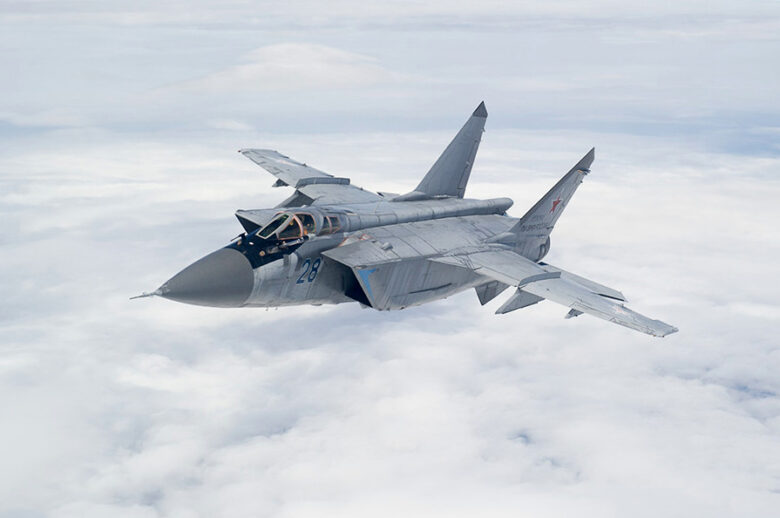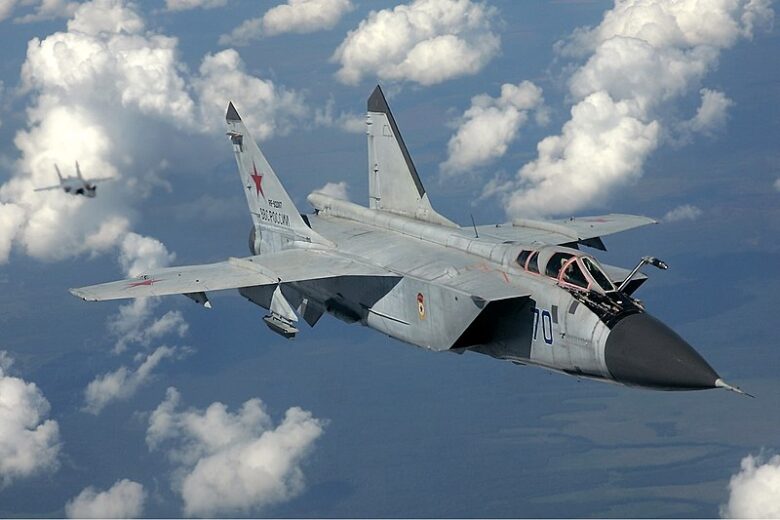Last Updated on 11/10/2022 by てんしょく飯
It is no secret that the Russian Aerospace Forces have failed to secure air superiority over Ukraine.
Hampered by inflexible procedures, a lack of precision weapons, and a solid Ukrainian air defense network, the Russian Aerospace Forces (VKS, Vozdushno-kosmicheskiye sily), despite having a 10:1 advantage in the number of fighter and attack aircraft over the Ukrainian Air Force, are at best only protecting themselves in the air above It is only protecting itself.
It is no secret that the Russian Aerospace Forces have failed to secure air superiority over Ukraine.

That does not mean that the Russians are doing everything wrong. Three regiments of VKS’s best fighters, the twin-engine, two-seat MiG-31BMs by Russian aircraft manufacturer Mikoyan, are winning even as most of the air force is losing.
MiG-31 crews conduct high-altitude defensive patrols along ever-changing fronts and fire powerful R-37M air-to-air missiles made by Russian weapons manufacturer Vympel, the Union of Scientific Manufacturing. In recent weeks, they have shot down several Ukrainian jets. The Ukrainian fighters and missiles lack the speed, range, and altitude performance to effectively counterattack.
VKS defense patrols “have proven to be very effective against Ukrainian attack aircraft and fighters, especially the MiG-31BM and R-37M long-range air-to-air missiles,” Justin Bronk, Nick Reynolds, and Jack Watling of the Royal Institute for Defense and Security Studies They wrote in a study posted on the website.
The 24-ton MiG-31, which first flew in 1975, is a rarity. The fighter is a modified version of the Cold War-era MiG-25, designed by Russia specifically to intercept supersonic U.S. Air Force bombers during nuclear attacks. Currently, about 90 modernized MiG-31BMs are deployed in three regiments. At least one of those regiments has deployed MiG-31BMs to the Russian-occupied Belbek Air Base in southern Ukraine’s Crimea to sortie over Ukraine.
The MiG-31 can fly higher, faster, and farther than the Ukrainian Air Force’s best fighter, the Su-27. This heavyweight fighter can fly at an altitude of 60,000 feet (18,000 meters), has a range of 450 miles (724 kilometers), and can dash at speeds of Mach 2.5 for short periods of time.
200 miles versus 50 miles.
The MiG-31’s crew can search for targets with the Zathlon radar, which is equipped from a high vantage point, and fire a single R-37M missile at a target 200 miles (321 kilometers) away. By comparison, the range of the R-27 missile, also made by Veempel and equipped on Ukrainian Su-27s, is less than 50 miles (about 80 kilometers).
When Ukrainian forces launched their counterattack in the east and south beginning in late August, the VKS conducted 24-hour patrols in eight zones over Ukraine, deploying a pair of MiG-31s or Su-35s on each patrol.
The patrols were to search for Ukrainian attack aircraft (Su-25, Su-24, and MiG-29) supporting the counterattack; since the counterattack began in late August, Ukraine has lost four MiG-29s, six Su-25s, and one each of Su-24 and Su-27, external analysts have confirmed.
It is not known how many MiG-31s the crews shot down. Probably several. The VKS fired up to six R-37Ms per day in October. This very long effective range, combined with a seeker designed to acquire low-altitude targets, makes this very fast weapon particularly difficult to evade,” Bronk, Reynolds, and Watling wrote in their study.
VKS lost one MiG-31, not in combat, but in an accident in Crimea. The crews of the other fighters have been attacking the Ukrainians, who have not been able to shoot back unscathed in this war.
The Ukrainian military’s most recent blow to MiG-31 units was a one-off shelling of the Belbek airbase in October. The rocket attack on this base destroyed or damaged several Russian aircraft, none of which were MiG-31s.


コメント